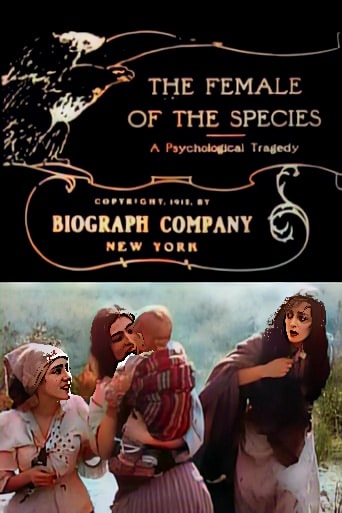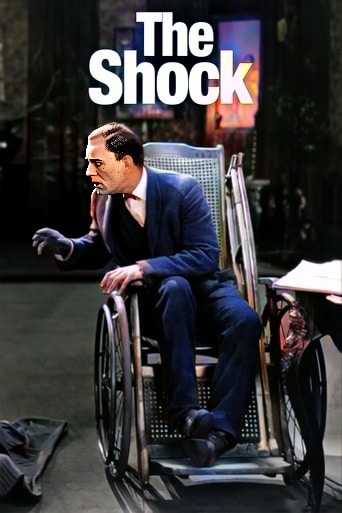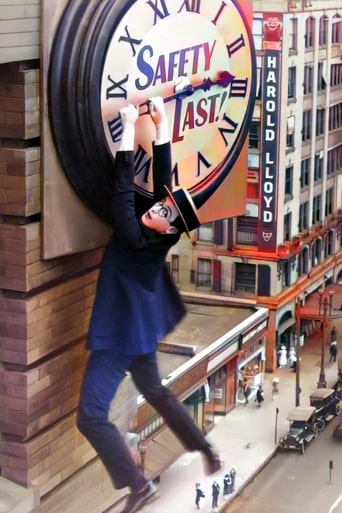The Female of the Species (1912)

 “The Female of the Species” (1912), directed by D.W. Griffith and starring Charles West, Claire McDowell, Mary Pickford, and Dorothy Bernard, is a poignant silent film that explores the harsh realities of life in a desolate mining camp.
“The Female of the Species” (1912), directed by D.W. Griffith and starring Charles West, Claire McDowell, Mary Pickford, and Dorothy Bernard, is a poignant silent film that explores the harsh realities of life in a desolate mining camp.
Against the unforgiving backdrop of the desert, the film weaves a narrative of survival, human frailty, and the complexities of morality.
The dreary mining camp, depicted in the film, serves as a visual metaphor for the desolation and isolation faced by its few remaining inhabitants. The arid landscapes, combined with the poignant graves in the background, set the tone for a story of privation and suffering. In this unforgiving environment, the fate of the characters becomes intertwined with the harsh realities of survival.
The central characters, a miner, his wife, her sister, and a young woman who is the sole survivor of another family, form a fragile group struggling against the inevitability of death. The deserted mining camp becomes a symbol of abandonment and despair, with the survivors left to navigate the harsh desert landscape in a race against time.
The film’s opening scenes establish a sense of foreboding, with the graves serving as a stark reminder of the challenges faced by those who attempted to make a life in this unforgiving land. As the characters embark on their desperate journey to the desert’s rim, the narrative unfolds with a tension that mirrors the harsh conditions they face.
The moral complexity of the story is introduced when, in a moment of weakness, the miner makes advances to the young woman in the group. This pivotal scene adds layers of emotional and moral tension to the narrative. The wife, witnessing the encounter from a distance, reacts with shock and disbelief. The ensuing struggle becomes a physical manifestation of the moral dilemmas faced by the characters.
Charles West, in the role of the miner, brings a nuanced performance that captures the fragility and desperation of a man pushed to the brink. The physical toll of survival in the harsh desert is evident in his character’s weakened state, adding a layer of realism to the film’s portrayal of human vulnerability.
Claire McDowell, as the wife, delivers a compelling performance that conveys a range of emotions, from the initial shock of betrayal to the complex moral decisions that follow. The film explores themes of trust, loyalty, and the breaking point of human endurance within the confines of a life-and-death struggle.
Mary Pickford, a silent film icon, portrays the young woman in the group. Her presence adds depth to the narrative, as her character becomes a focal point for the moral conflict that unfolds. Pickford’s ability to convey emotion without dialogue is showcased in her performance, contributing to the film’s emotional resonance.
Dorothy Bernard, as the sister, also plays a crucial role in the dynamics of the group. The tension between the characters escalates as suspicions arise, leading to a pivotal moment of confrontation that will determine the course of their desperate journey.
The film’s themes of vengeance and moral reckoning take center stage as the characters grapple with the aftermath of the confrontation. The specter of death looms large, and the survivors are faced with decisions that will shape their destinies. The unfolding events challenge preconceived notions of right and wrong, adding layers of complexity to the narrative.
D.W. Griffith’s direction is notable for its ability to convey the emotional weight of the story through visual storytelling. The use of the desert landscape as a character in itself adds a layer of symbolism to the film. The vast, barren expanse becomes a metaphor for the moral uncertainties faced by the characters, with each step in the desert mirroring the journey of their collective conscience.
The film’s conclusion introduces a singular intervention of fate, diverting the characters from the path of vengeance. This twist adds an element of unpredictability to the narrative, challenging the audience’s expectations and providing a resolution that is both unexpected and thought-provoking.
“The Female of the Species” stands as a testament to the storytelling prowess of D.W. Griffith and the emotional depth that silent cinema could achieve. The film’s exploration of morality, survival, and the complexities of human relationships elevates it beyond a simple tale of desert hardship. The moral quandaries faced by the characters resonate with universal themes, making the film a timeless exploration of the human condition.
In conclusion, “The Female of the Species” (1912) remains a classic in silent cinema that deftly explores the moral complexities of survival in a harsh desert landscape. The performances of Charles West, Claire McDowell, Mary Pickford, and Dorothy Bernard contribute to the film’s emotional resonance, while D.W. Griffith’s direction elevates the narrative through visual storytelling. The film’s exploration of morality and the human psyche, set against the unforgiving backdrop of the desert, cements its place as a poignant and thought-provoking classic in the history of silent cinema.
Release Date: April 15th, 1912
Main Cast Members
Charles West (The Miner)
Claire McDowell (The Miner’s Wife)
Mary Pickford (The Miner’s Wife’s Sister)
Dorothy Bernard (The Other Woman)
Loading live eBay listings...




